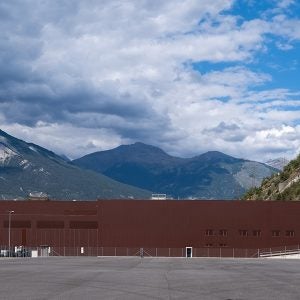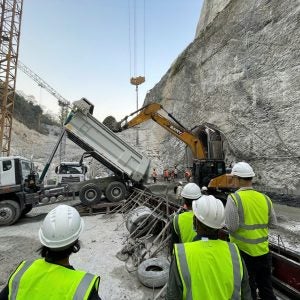The vortex-type sediment extractor has the advantage of smaller size, lower flushing discharge and comparable sediment removal efficiency when compared to the Dufour type extractors. To remove sediment, a vortex-type extractor utilizes the secondary flow generated by the circulatory flow induced in a cylindrical basin. The secondary flow moves the fluid layers, including the sedimentary particles, towards the orifice of the flushing pipe installed at the centre of the basin, for ultimate ‘flushing out’. The design of a vortex-type extractor includes determination of the basin dimensions: empirical relations proposed by several investigators are generally adopted as a guideline, whereas hydraulic model studies are conducted to optimize the sediment removal efficiency of the proposed vortex basin. The study reported in this paper investigates the effect of the variation of key components of a vortex extractor, especially the elevation of the horizontal diaphragm on the sediment removal efficiency, by conducting hydraulic model experiments. Tests have been performed on a model of the vortex extractor proposed for the Jaldhaka Hydroelectric Project owned by the West Bengal State Electricity Board (India).






